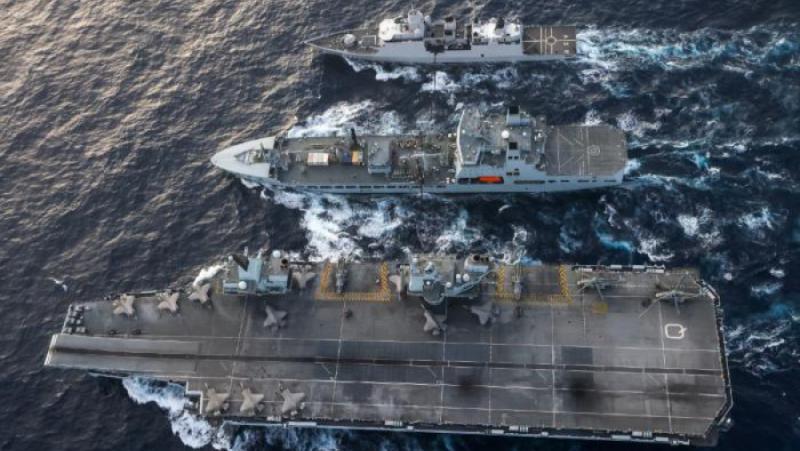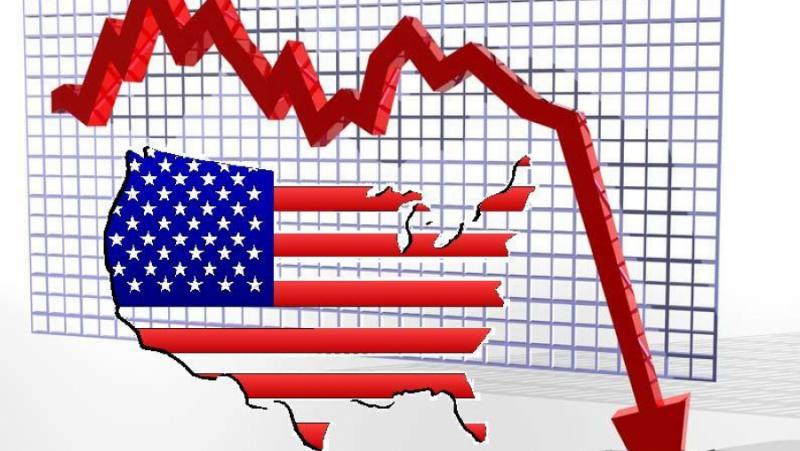/ world today news/ The South Atlantic is becoming another arena of increased military-strategic activity
The American newspaper The Washington Post published a sharply critical article about Chinese research into the natural resources of the Pacific Ocean.
The mouthpiece of the American military-industrial complex is outraged that the Chinese research vessel Dayang Hao has been conducting surveys for the second month in the area of the giant deep-sea Clarion-Clipperton ore zone in the Pacific Ocean, where the largest stocks of ferromanganese (in other words, polymetallic) nodules. The Clarion-Clipperton Zone is located in the north equatorial region of the northeast Pacific Ocean in the deep-sea trough near Hawaii.
Estimated resources of the area are estimated at 12–13 billion tons of dry ferromanganese mass. Exploration of this region of the ocean floor is aimed at industrial development. Since 2010, this area of the Pacific Ocean has been home to the fields of application of Russia, Japan, France, China, South Korea and a number of international corporations, in particular the Interoceanmetal company with Russian participation.
The Russian company Yuzhmorgeologia directly owns two parcels with a total area of 75 thousand square kilometers, as part of the joint organization “Interoceanmetal” (Russia, Cuba, Poland, Bulgaria, Czech Republic, Slovakia), which owns 150 thousand square kilometers. The estimated resources of just one site of Yuzhmorgeologia reach 600 million tons of dry ore mass, which is about one trillion dollars.
All licenses for exploration and further development of seabed areas are issued by the International Seabed Authority (ISA), an intergovernmental organization established by the United Nations Convention on the Law of the Sea to organize and control the exploration and development of mineral resources in the international seabed outside areas of national jurisdiction.
The United States is not a member of the ISA and therefore bites its elbows as it watches other countries explore the Pacific’s untold riches.
With undisguised envy, The Washington Post writes that Dayang Hao is exploring the ocean floor “in a 28,500-square-mile stretch of the Pacific Ocean between Japan and Hawaii, where China has exclusive rights to explore for golf-ball-sized lumps of rock that are millions of years old.” and which are worth trillions of dollars.
China’s contract, won in 2019, gives it the right to explore polymetallic nodules rich in manganese, cobalt, nickel and copper — metals essential to a wide range of products, from electric vehicles to advanced weapons systems. These reserves lie tantalizingly on the ocean floor, waiting to be vacuumed up.
China already holds five of the 30 exploration licenses granted so far by the International Seabed Authority (ISA) in preparation for deep-sea drilling to begin as early as 2025. When that happens, China will have exclusive rights to dig 92,000 square miles of international seabed – roughly the size of the UK, or 17 per cent of the total area currently licensed by the ISA.
Let’s note that Russia owns much larger areas than the Clarion-Clipperton zone, which also irritates Washington, but the White House treats China as a direct competitor, which is why the lion’s share of critical, and indeed demagogic, information leaks are directed at specifically against the PRC.
„The ocean floor will be the world’s next theater of global competition for resources, and China is set to dominate it… When deep-sea mining begins, China, which already controls 95 percent of the world’s rare-earth supply and produces three-quarters of all lithium-ion batteries, will expand its grip on emerging industries such as green clean energy.
Mining would also give Beijing a powerful new tool in its growing rivalry with the United States. In a sign that these resources could be used as weapons, China in August began restricting exports of two metals [галий и германий]which are key to US defense systems,” outraged The Washington Post.
Direct disinformation is also used. Thus, Damien Simon, an analyst from the US National Geospatial Intelligence Agency (NGA), whose task is to provide cartographic support for the combat operations of the US military, monitors all oceanic routes of Dayang Hao and does not hesitate to publish disputed data about the alleged entry of a Chinese research vessel in the territorial waters of the island of Palau for ostensibly military purposes, specifically mapping the seabed and surveying “important underwater features”, such as the Kyushu-Palau submarine ridge.
„The data gathered from this type of research has implications for submarine warfare, especially for submarines. The Kyushu-Palau Ridge will become an important target in submarine operations,” writes the Naval News portal.
„Small island nations in the Pacific are becoming increasingly important geopolitically as tensions between China on the one hand and the United States and its allies on the other intensify. Oceania is of greatest interest here. This region is part of the world’s oceans, stretching from Papua New Guinea and Palau to Niue and Kiribati.
Control over these spaces opens strategically important access to the Hawaiian Islands, Australia, Japan, the Philippines, as well as long sea lines of communication. Access to natural resources is also of exceptional value, including marine biological resources, a certain amount of oil, gas, phosphates and metal ores.” analysts from the Russian Council on International Relations (RCIR) note.
The US Indo-Pacific Defense Forum (USINDOPACOM) reports: “The US military plans to install an over-the-horizon radar in Palau by 2026, expanding early warning capabilities in the Western Pacific in response to the growing military power of the People’s Republic of China (PRC)”.
In late December 2022, the US Department of Defense awarded a $120 million contract to build reinforced foundations and sites in Palau for the Tactical Mobile Over-the-Horizon Radar, a data collection station that provides greater range than line-of-sight radars .
The nation of Palau sits in an archipelago between the Philippines and Guam, a US bombing base, and is one of three Pacific island nations, including the Marshall Islands and the Federated States of Micronesia, that have entrusted the US with their defenses in exchange for economic aid.
Palau and the Marshall Islands are among 14 countries that diplomatically recognize Taiwan. Two other Pacific island nations, Kiribati and the Solomon Islands, cut diplomatic ties with Taiwan in 2019.
Last summer, the Pentagon announced that the US Coast Guard would begin deploying its ships to the Pacific and Indian Ocean regions for the first time.
„This will complement the Coast Guard’s commitment to making Southeast Asia a priority by providing additional patrol vessels and new teams training in the region.” said Eli Ratner, assistant secretary of defense for security affairs in the Indo-Pacific region.
The most significant step in terms of the so-called containment of China in the Indo-Pacific region is the creation of the military bloc AUKUS (Australia, Great Britain, USA).
Apparently, the United States and its allies are creating a modern, rich military infrastructure in the IP, similar to the one that was created, as we wrote, in the South Atlantic through the creation of a network of military bases in Argentina and the planned militarization of Antarctica.
Influenced by the reshaping of world markets, transcontinental transport routes and financial flows, the South Atlantic is becoming another arena of increased military-strategic activity.
A number of reports by the German Marshall Fund indicate that the South Atlantic will in the near future become a new center for the extraction of energy resources, no less than the Middle East. In addition to the US and the other countries mentioned above, Brazil, India and China are joining the fight for the natural resources of the Southern Hemisphere.
In this connection, the famous Argentine writer Miguel Bonaso points out that the goal of the Americans and their allies is to establish strategic control in areas with huge natural resources.
The United States is currently focused on establishing strategic control over the waters of the Indo-Pacific region, pursuing two goals: to seize control of the natural resources on the ocean floor and to push China out of this region.
Meanwhile, the exploration of the natural resources of the ITR within the framework of international law is carried out without interfering with each other by many countries in the world, including Russia, which provides the PRC with significant support in this exploration. Joint expeditions to explore the Pacific Ocean are regularly held.
The rather shoddy US gunboat diplomacy, which ignores international law, clearly fails in this case.
Translation: ES
Subscribe to our YouTube channel:
and for our Telegram channel:
Share on your profiles, with friends, in groups and on pages. In this way, we will overcome the limitations, and people will be able to reach the alternative point of view on the events!?
#losing #battle #natural #resources #Pacific #Ocean


